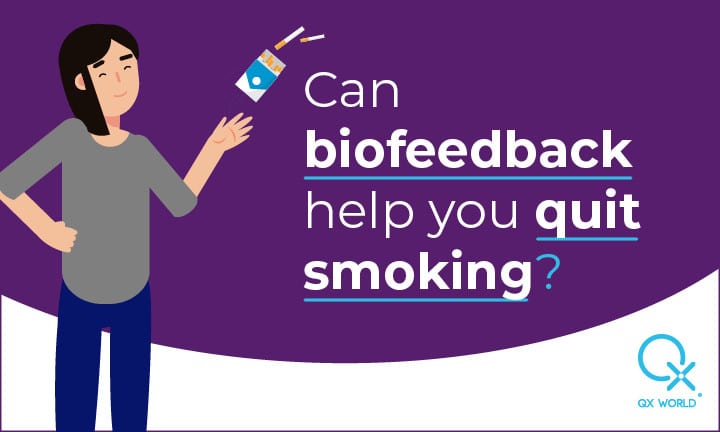
People who want to quit smoking tend to do better when biofeedback is thrown into the therapy mix. Discover how biofeedback can help you break the vicious circle of smoking addiction by helping you to manage stress and by addressing your body electric.
Did you know nicotine calms you down? If you’ve already tried to quit smoking at one point, this shouldn’t come as a surprise. Indeed, studies have shown that smoking and anxiety go hand in hand. Or, better said, people who suffer from elevated anxiety levels find themselves more drawn to smoking than people whose lives are less stressful. Some doctors even compare the relaxing effect of nicotine to popular tranquilizers such as Valium.
Just like most drugs, however, nicotine leaves you feeling worse once you stop using it. While smoking may relax you, trying to overcome a smoking addiction is likely to make you feel more anxious than when you first started to smoke. It is only when you grasp this vicious circle that you can truly start to try and break it.
Coughing and shortness of breath are just two of the detrimental effects smoking has on the body. Just ask a biofeedback therapist. They will be happy to hook you up to a biofeedback device to measure your automatic bodily functions (such as heart rate, muscle tension, blood pressure and skin temperature) while you get to watch the results on a monitor in real-time.
Fun fact! The positive effects of quitting smoking already start to show just eight hours after your last cigarette. As oxygen levels in your body start to rise, your lung capacity immediately improves.
As biofeedback therapy confronts you with the effects that (not) smoking has on your body, you will find yourself increasingly motivated to quit.
Now this is where it gets really interesting. Next to increasing body awareness, biofeedback teaches you to mimic the relaxing effect of nicotine has on your body, taking away your desire to smoke.
The biofeedback therapist not only makes you more aware of your body’s involuntary processes. They also help you master various relaxation techniques (to lower your heart and breathing rates, for instance) which you can use to keep anxiety from taking over. Instead of having to reach for a cigarette, you can rely on relaxation techniques that are non-invasive and, perhaps most importantly, non-addictive.
And it gets even better. Whereas ‘traditional’ biofeedback teaches you to make bodily changes with your conscious mind, quantum biofeedback focuses on the unconscious parts of the body and brain. So, instead of you having to practice altering your body’s physical response to stress, the quantum biofeedback device does (most of) the work for you.
Both traditional and quantum biofeedback involve electrodes or harnesses which are (painlessly) placed on the skin. Quantum biofeedback takes things to a whole other level, however, as the device sends out electromagnetic waves which attempt to re-educate the frequencies of imbalanced ‘addicted’ cells in the body and brain, guiding those cells towards their natural state again.
As it actively helps you gain control of your body’s (otherwise) involuntary processes, quantum biofeedback is known to improve the effects of addiction therapies such as smoking. It is even known to reduce and, in some cases, eliminate the need for medication entirely.
Biofeedback helps you take control over your body’s automatic reactions to stress, so that you no longer need nicotine to relax. Because successfully completing quantum biofeedback is like learning how to ride a bicycle, chances are you will never smoke again. Even long after the training is over, your brain remembers the new, more efficient pathways that have been created. It is not unusual for heavily addicted people who have included quantum biofeedback in their rehabilitation program to still be reaping the benefits years after finishing their final session.
+1 (989) 681-1063
+1 (856) 322-8589